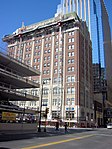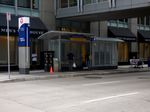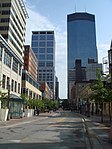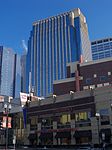U.S. Bancorp Center
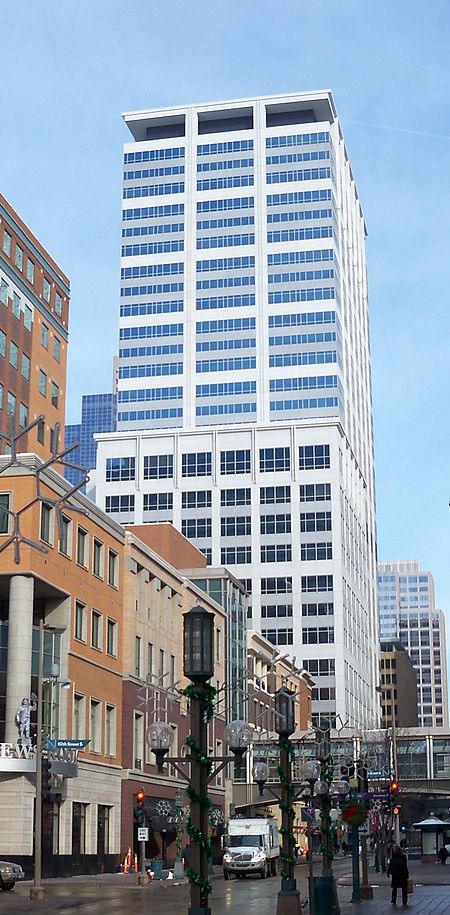
The US Bancorp Center is a 467-ft (142 m) tall skyscraper in Minneapolis, Minnesota. Completed in 2000, the 32-story building is the 13th-tallest in the city. It serves as corporate headquarters for US Bancorp, US Bank and Piper Sandler. A skyway connects the building to the former Macy's/Daytons department store building, and Target. Several low-rise buildings were demolished to make way for this building, including the 808 Building. This is one of the three contiguous blocks designed by Ellerbe Becket from 1998–2001. The other two are 900 Nicollet Plaza and Target Plaza. It is the second-tallest office building completed in the US in 2000, after the Ameriprise Financial Center, also in Minneapolis.
Excerpt from the Wikipedia article U.S. Bancorp Center (License: CC BY-SA 3.0, Authors, Images).U.S. Bancorp Center
Minneapolis Skyway, Minneapolis
Geographical coordinates (GPS) Address External links Nearby Places Show on map
Geographical coordinates (GPS)
| Latitude | Longitude |
|---|---|
| N 44.975555555556 ° | E -93.273888888889 ° |
Address
US Bancorp Center
Minneapolis Skyway
55402 Minneapolis
Minnesota, United States
Open on Google Maps



